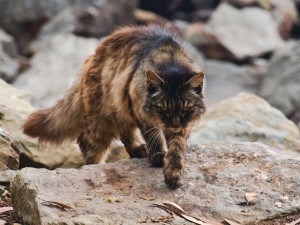Australian Government Plans to Kill Millions of Feral Cats
Australian Environment Minister Greg Hunt announced in July that the government plans to eliminate over two million feral cats by the end of the decade. This decision was met with fierce backlash from cat lovers, animal rights activists, and several celebrities. Brigitte Bardot and Morrissey have both openly accused the Australian government of performing “cat genocide” that is both “inhumane and ridiculous.” According to Australian government officials, however, the plan arose in response to the need to save several threatened indigenous species.

Ever since cats were introduced by Europeans in 1804, they have thrived in Australia. However, like many introduced species, cats adapted too well in their new environment. There are now around 20 to 30 million feral cats on the island -- a number that is growing quickly. The growing population of feral cats has proved detrimental for 20 mammals, 20 bird, and 30 plant species on the island. Animals such as the hairy-nosed wombat and the boobook owl are now on the verge of extinction.
The Australian government plans to spend around six million dollars on millions of poisonous traps for the feral cats. In response to backlash, Australian Environment Minister Greg Hunt put out a statement saying “We don’t hate cats. We just can’t tolerate the damage that they’re doing anymore to our wildlife.”
However, critics of the plan suggest that the millions of dollars being devoted to exterminating feral cats should instead be used to sterilize the existing population so that their numbers could decrease naturally.
The fight between animal rights activists and the Australian government is not surprising, and has been occurring in other countries as well. The morality of killing millions of innocent animals in order to offset the effects of overpopulation is something that is currently being debated in both Mexico and India, two countries with considerable stray dog populations. As of now, most major environmental organizations, including the World Wildlife Fund and the Nature Conservancy, support the Australian government’s plan, which is set to continue unhindered.
